 EN
EN
 PT
PT

Quick guide for teachers
PRIMARY SCHOOL
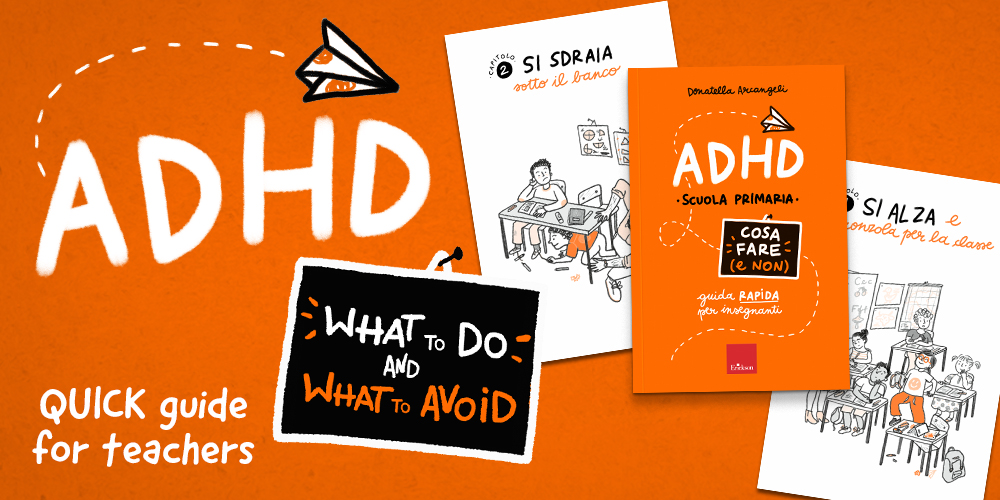
In the style of a Teacher Training notebook, this is a quick guide for primary school teachers who have pupils with ADHD, which can help them learn more about the disorder and apply simple but effective strategies to deal with it and manage it in the best possible way.
BOOK STRUCTURE AND CONTENTS
ADHD – What to do and what to avoid contains “ready to use” focused instructions to successfully deal with 15 problem behaviours that school-aged children (6-11 years old) typically have.
The book is divided into 15 chapters, grouped into 3 macro-sections: Hyperactivity, Impulsivity, and Inattention:
What to o and what to avoid
The reason for each behavior is initially explained in a few brief sentences (Why does he/she do this?), followed by simple and clear indications for the teacher on the attitudes to be adopted and avoided (What to do, What NOT to do). A discussion on the topic follows (What to keep in mind) and tools and strategies are provided in How to intervene with regard to some crucial educational and didactic aspects. This is further explored in the paragraphs dedicated to Structuring and collaboration guidelines are then drawn up with parents and other school workers (The educational pact).
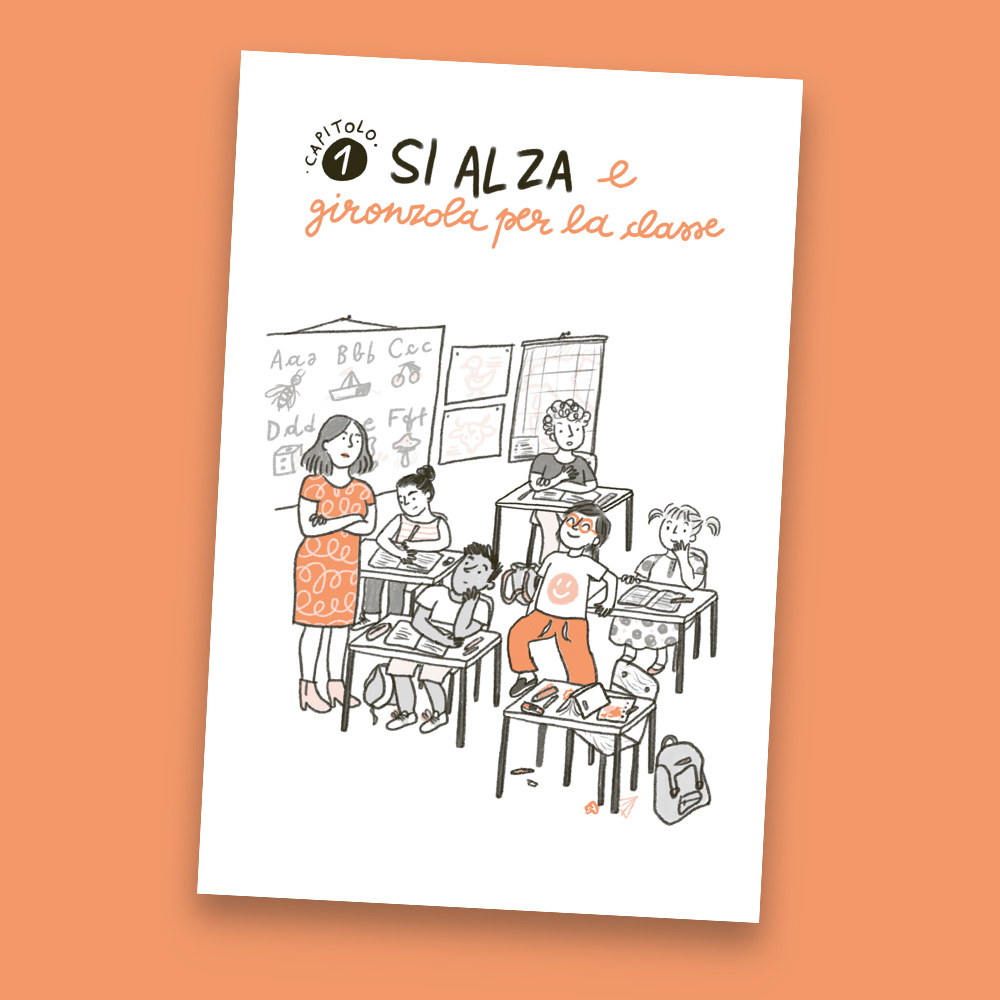
At the beginning of each chapter, a drawing introduces the analysed behaviour.
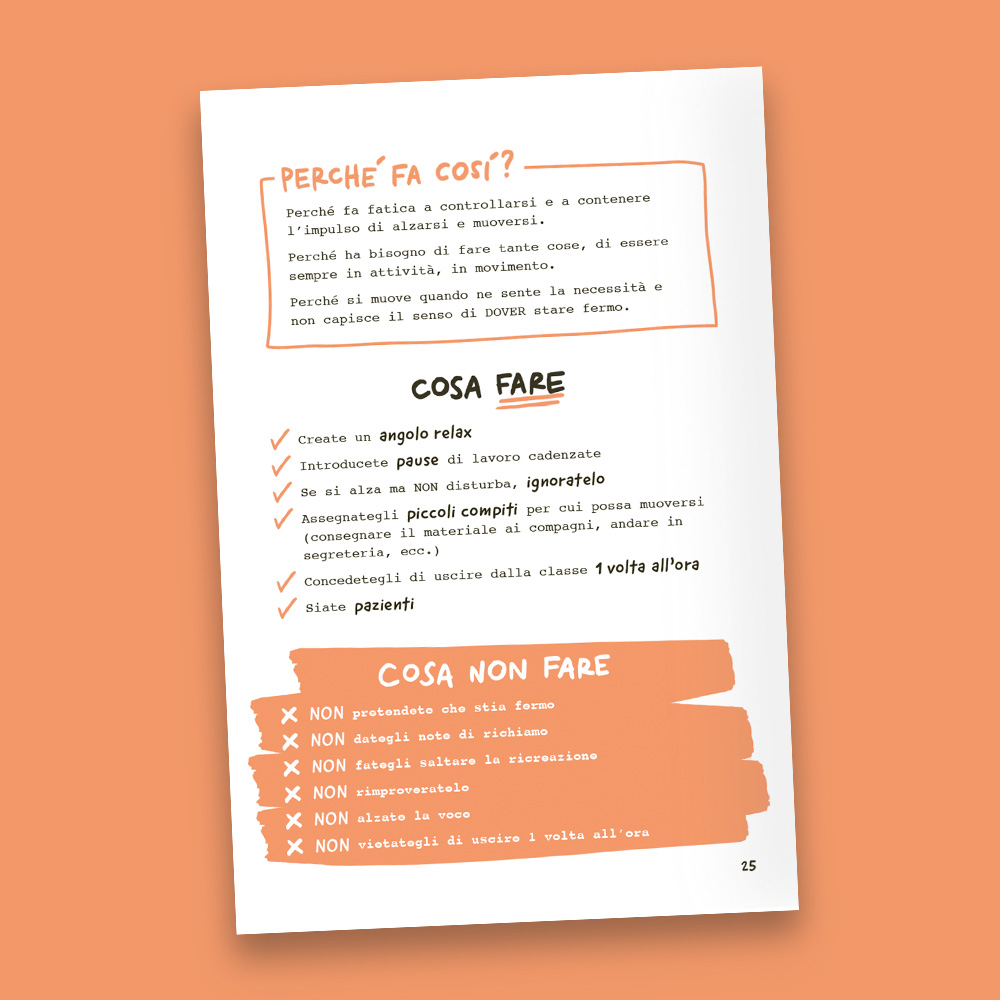
• Explanations of the problem behaviour being considered: Why does he/she do this?
• Brief and simple indications that can be useful to the teacher as a reference point for quickly deciding What to do and reflect on What to avoid.
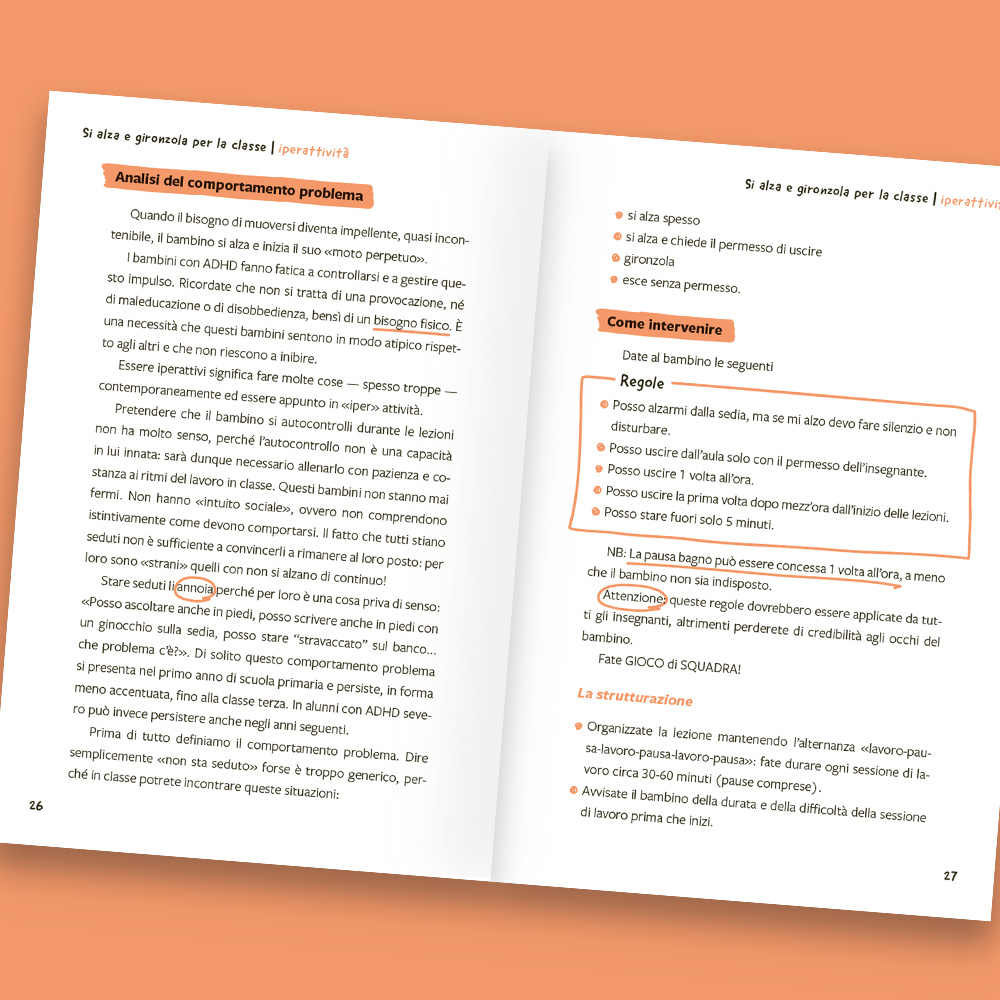
• A more in-depth description of the specific problem behaviourbeing worked on: Analysis of the problem behaviour.
• The tools and educational strategies to create the intervention: How to intervene.
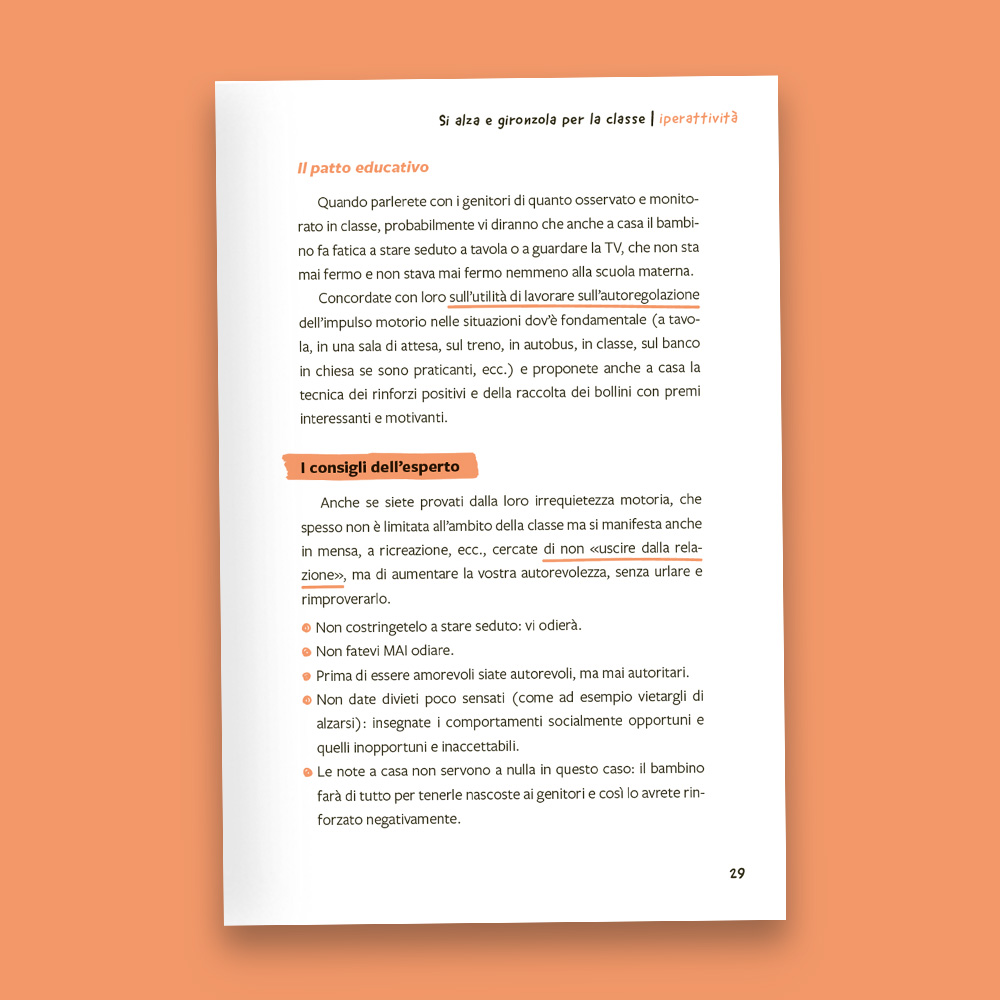
Each chapter closes with The expert advice: reflections to further understand and enrich the teacher’s “briefcase of educational tools”.
Appendix
In the Appendix there are useful worksheets for the teacher, which can also be downloaded and printed in A4 format from the Online Resources:
Leaf through the worksheets in the Appendix, which have been translated into English to facilitate your evaluation:
THE AUTHOR
Donatella Arcangeli is a doctor, and a child/adolescent neuropsychiatrist. In her clinic and training practice for health workers, social workers and teachers she dedicates herself to mental health in childhood, with particular attention to children with ADHD. For years she has been dealing with Teacher Training for school staff throughout the territory of the autonomous province of Bolzano, providing teachers with working tools for the management of students with special educational needs or disabilities.